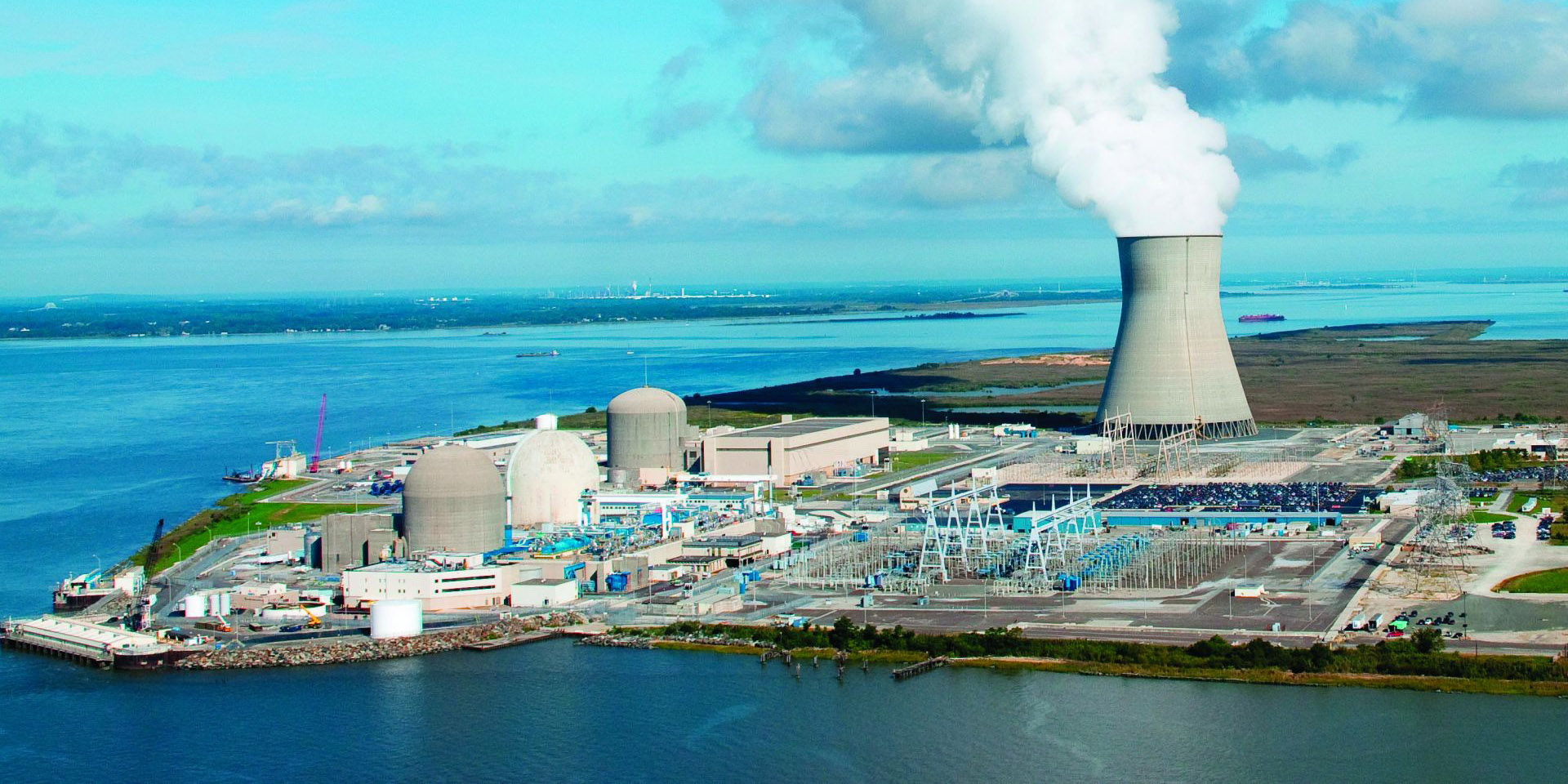South Korea’s Shin-Hanul-2 is on the right, with Unit 1 to the left. (Photo: KHNP)
Unit 2 of South Korea’s Shin-Hanul nuclear power plant entered commercial operation on April 5, Korea Hydro & Nuclear Power announced. It is the nation’s 26th operating reactor, which continues the upward nuclear trend as South Korea reverses a previous phase-out plan for nuclear.
Left: A technician inserts a steel tube containing fuel into the SNAP-10A reactor core vessel. (Photo: DOE) Right: A cross-section view of the reactor. (Image: DOE)
Systems for Nuclear Auxiliary Power (SNAP) was an Atomic Energy Commission program with the goal of producing a portable and dependable power source centered around nuclear technology that could be utilized in land, sea, and space applications. The program aimed to provide a compact reactor—a necessity for space applications—and ran from 1955 until 1973, when it was discontinued.
In Curaçao, IAEA experts built national capacity through demonstrations, including practicing removing the Ra-226 source from the container, characterizing it, and placing it into a stainless-steel capsule. (Photo: IAEA)
Once used for applications in medicine, industry, and research, many countries now have legacy radium-226 sources, according to the International Atomic Energy Agency. With the support of the IAEA’s technical cooperation program, these disused sealed radioactive sources are being recovered, and countries are improving national capacities for their long-term management, including their potential reuse and recycling.
SRMC’s Dave Olson (left) presents a $10,000 check to Voorhees University president Ronnie Hopkins. (Photo: SRMS)
Savannah River Mission Completion (SRMC), the liquid waste contractor at the Department of Energy’s Savannah River Site, recently presented a $10,000 check to Voorhees University to fund science, technology, engineering, and math (STEM) scholarships.
Upgrades are under way at the Hanford Site's 222-S Laboratory, including replacing the Cold War-era windows in the labs hot cells. Photo: DOE)
The Hope Creek and Salem nuclear power plants. (Photo: PSE&G)
PSEG Nuclear LLC announced this week it will pursue subsequent license extensions to keep the three reactors at its Hope Creek and Salem plants operating for an additional 20 years. Both plants had been granted initial life extensions years ago by the Nuclear Regulatory Commission, Salem-1 and -2 on June 30, 2011, and Hope Creek on July 20, 2011.
October 31, 1928–March 31, 2024

Jupiter
Clyde Peter Jupiter passed away peacefully March 31, 2024, at the age of 95. Born October 31, 1928, in New Orleans, La., Jupiter attended public and parochial schools in New Orleans, graduating from Xavier University in 1948. He was a member of the Alpha Phi Alpha fraternity and was noted as one of the first African Americans to attend Notre Dame University in 1949.
Following graduation, Jupiter pursued a career in the field of physics, where he was renowned for his contributions to nuclear radiation detection and the advancing of nuclear energy. His career in the nuclear field included working for such agencies as the Atomic Energy Commission, Lawrence Laboratories, and the Nuclear Regulatory Commission.
He also served in the U.S. Army from 1954 to 1956 at the Chemical Corps Laboratory, in Fort Detrick, Md.













